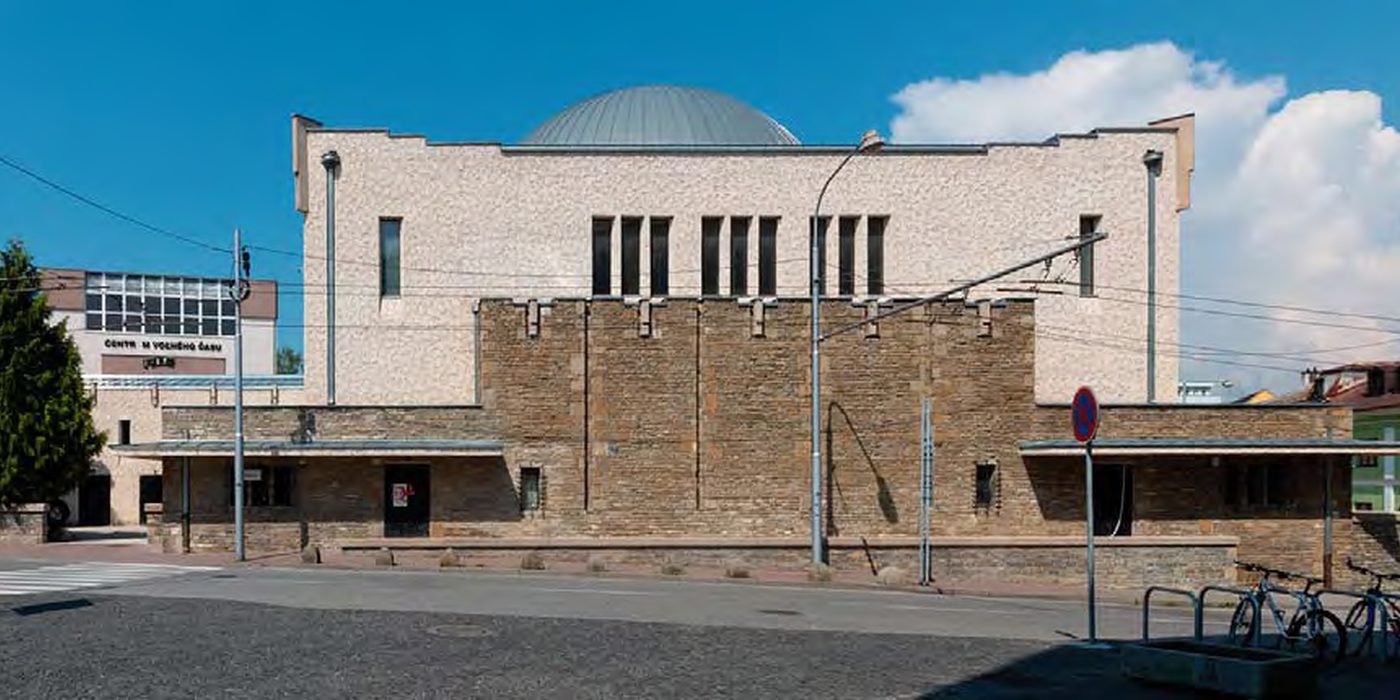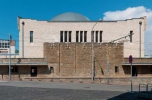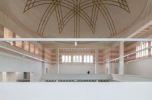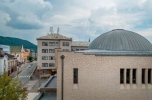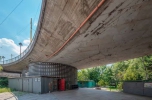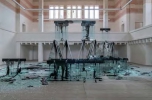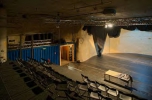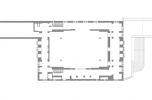One who is faithful in small details…
The Recreation of the Neologue Synagogue and Žilina-Záriečie, Žilina
Architects: Peter Behrens (1931), Martin Jancok (2017)
Text: Bálint Botzheim
Photos: Tamás Bujnovszky, Vanda Bujnovszky, Bálint Botzheim
The reconstruction of the New Synagogue in Zsolna and the Stanica Žilina-Záriečie culture centre was initiated and managed by a local cultural association founded by civilians starting from finding sponsors to design and construction. The building of the New Synagogue was designed by Peter Behrens, and was completed by 1931, but had only been used as such for a decade or so. During the world war it was confiscated from the Jewish community, and was used by the town. In 2010 managers of the Stanica cultural centre worked out a proposal to use the building for cultural purposes. During this remodelling a priority was to restore the building to its original design as much as possible. Viewed from the outside, the building is a blend of Expressionist and Art Deco styles, its main block contains the central space topped with a ferro-concrete dome which was a cutting edge structure back in those days. The four conrers of the symmetrical mass have been accentuated by the elevation of the facade end walls, as well as by ornaments gracing the corners. Functionally, the central block is used as an exhibition zone, whilst the back wing primarily functions as a café, but is also suitable to host conferences. The reconstruction of the synagogue was initiated by the Truc sphérique civilian cultural association which started to operate and maintain a former railway station building as a theatre. The building itself – not far from the synagogue – stands in the middle of a risen roundabout, as well as beneath it. Its width was defined by the freeway overpass, whilst the floor plan is made up by two circles intersecting each other. The walls are made of adobes with straw and cans of beer as high as the bottom of the overpass, the ferroconcrete structure of which substitutes the roof. The composition of two circular prisms are completed with a container that houses two functions: the entrance and services.
